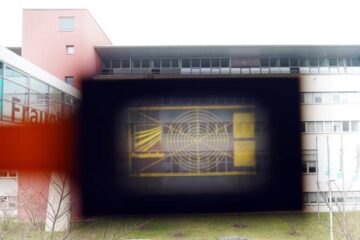New insights could mean better fish feeds

Studies of fish by researcher Henrik Seth from the University of Gothenburg’s Department of Zoology have helped to increase our understanding of what happens in parts of the body after one of its most frequently recurring activities: eating.
It has long been known that a number of changes take place in the body following food intake, including an increase in blood flow to the stomach and intestines. This happens in humans and other mammals as well as in fish. However, we still know relatively little about the signals that trigger these changes and how they are regulated. Both the volume and the chemical composition of food play a role in how the body reacts.
Chemical composition affects energy consumtion
“It’s not just blood flow that is affected by its chemical composition, but also energy consumption in the stomach and intestines, and these factors are believed to be interlinked,” says Seth.
If energy consumption in the stomach and intestines rises, an increased blood flow will be needed to supply the active tissue with oxygen and nutrients.
“Increased blood flow is also important for carrying away absorbed nutrients so that they can be used to nourish different parts of the body and to build up and repair different tissues.”
The results of Henrik Seth’s research also show that parts of a fish’s nervous system are involved in this regulation, and that a number of hormones (including cholecystokinin) can affect this regulation depending on the composition of the food.
It is primarily here that an increased understanding of this field could make it possible to produce fish feeds in the future that require less energy to be broken down and absorbed.
“It might then be possible to enhance the growth of farmed fish, which would greatly increase the efficiency of fish farming with less wastage of energy,” says Seth. “Using nutrients as efficiently as possible may prove increasingly important as the global population continues to swell.”
The thesis On the Regulation of Postprandial Gastrointestinal Blood Flow in Teleost Fish was successfully defended on 11 June.
Journal: Am J Physiol Regul Integr Comp Physiol. 298, R1240-1248. 2010 Feb 17.
Title: Cholecystokinin (CCK) as a potential regulator of cardiac function and postprandial gut blood flow in rainbow trout (Oncorhynchus mykiss).
Authors: Seth H, Gräns A, Axelsson M. (2010)
For further information, please contact:
Henrik Seth, Department of Zoology, University of Gothenburg
+46 31 786 34 85
+46 707 22 30 49
H.Seth@zool.gu.se
Media Contact
More Information:
http://gupea.ub.gu.se/handle/2077/22030All latest news from the category: Life Sciences and Chemistry
Articles and reports from the Life Sciences and chemistry area deal with applied and basic research into modern biology, chemistry and human medicine.
Valuable information can be found on a range of life sciences fields including bacteriology, biochemistry, bionics, bioinformatics, biophysics, biotechnology, genetics, geobotany, human biology, marine biology, microbiology, molecular biology, cellular biology, zoology, bioinorganic chemistry, microchemistry and environmental chemistry.
Newest articles

Advanced Brain Science Without Coding Expertise
Researchers at Helmholtz Munich and the LMU University Hospital Munich introduce DELiVR, offering a new AI-based approach to the complex task of brain cell mapping. The deep learning tool democratizes…

Transparent emissive microdisplays
… for ultra-light and compact augmented reality systems. As part of the HOT project (High-performance transparent and flexible microelectronics for photonic and optical applications), scientists from the Fraunhofer Institute for…

Bringing bio-inspired robots to life
Nebraska researcher Eric Markvicka gets NSF CAREER Award to pursue manufacture of novel materials for soft robotics and stretchable electronics. Engineers are increasingly eager to develop robots that mimic the…





















